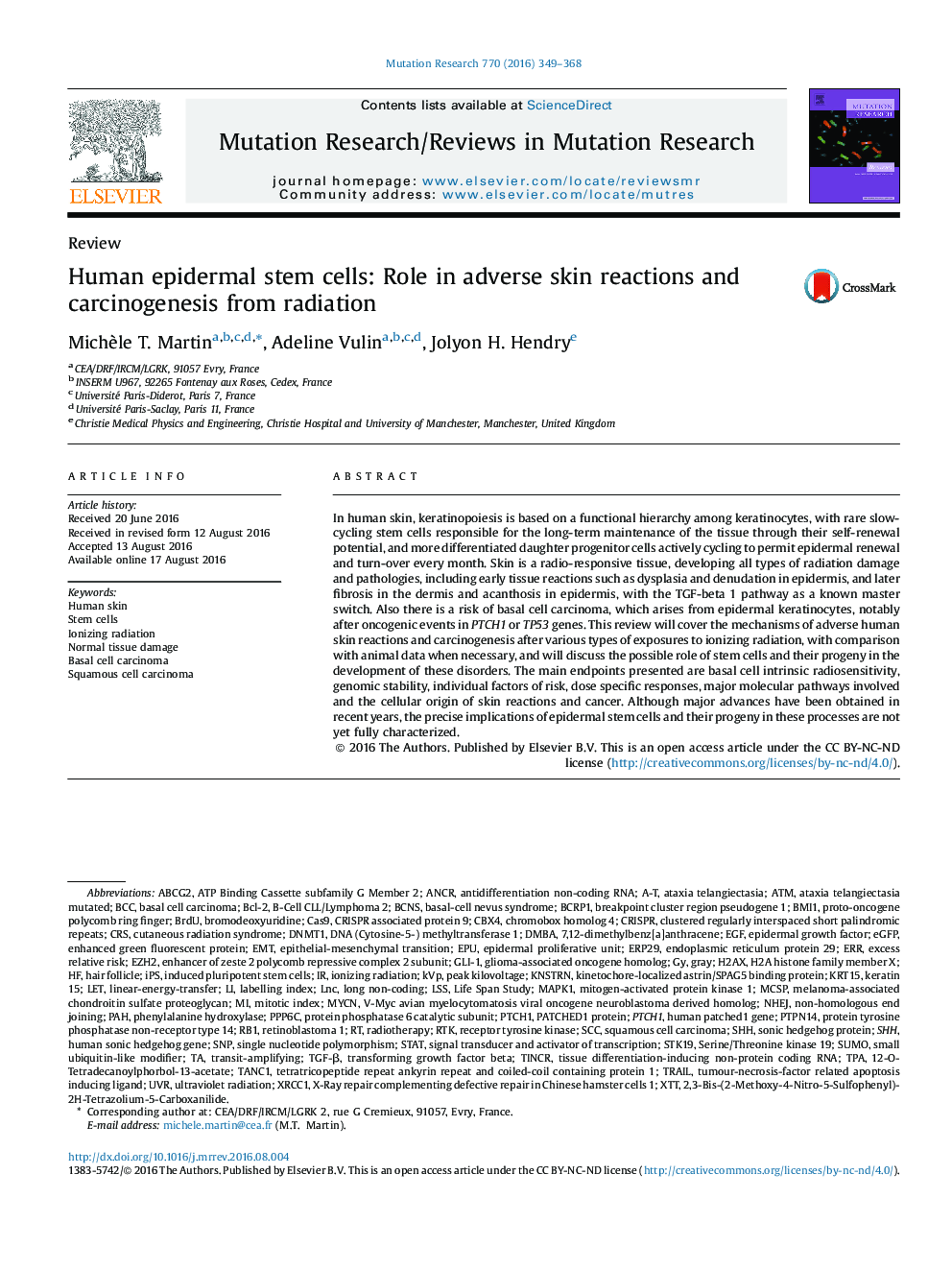| کد مقاله | کد نشریه | سال انتشار | مقاله انگلیسی | نسخه تمام متن |
|---|---|---|---|---|
| 5528917 | 1401667 | 2016 | 20 صفحه PDF | دانلود رایگان |
In human skin, keratinopoiesis is based on a functional hierarchy among keratinocytes, with rare slow-cycling stem cells responsible for the long-term maintenance of the tissue through their self-renewal potential, and more differentiated daughter progenitor cells actively cycling to permit epidermal renewal and turn-over every month. Skin is a radio-responsive tissue, developing all types of radiation damage and pathologies, including early tissue reactions such as dysplasia and denudation in epidermis, and later fibrosis in the dermis and acanthosis in epidermis, with the TGF-beta 1 pathway as a known master switch. Also there is a risk of basal cell carcinoma, which arises from epidermal keratinocytes, notably after oncogenic events in PTCH1 or TP53 genes. This review will cover the mechanisms of adverse human skin reactions and carcinogenesis after various types of exposures to ionizing radiation, with comparison with animal data when necessary, and will discuss the possible role of stem cells and their progeny in the development of these disorders. The main endpoints presented are basal cell intrinsic radiosensitivity, genomic stability, individual factors of risk, dose specific responses, major molecular pathways involved and the cellular origin of skin reactions and cancer. Although major advances have been obtained in recent years, the precise implications of epidermal stem cells and their progeny in these processes are not yet fully characterized.
Journal: Mutation Research/Reviews in Mutation Research - Volume 770, Part B, OctoberâDecember 2016, Pages 349-368
